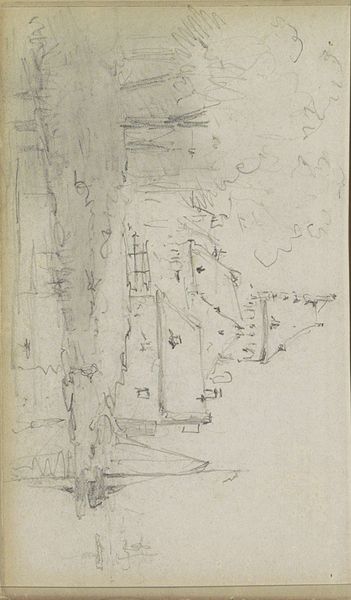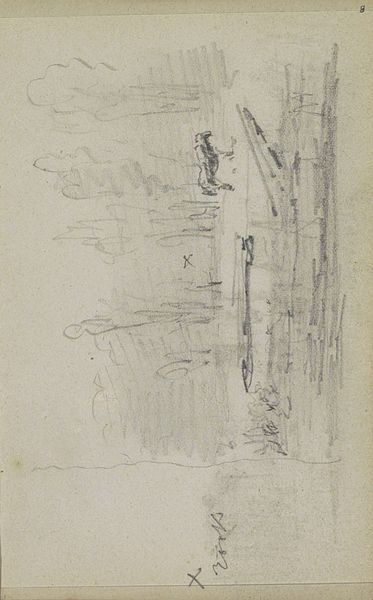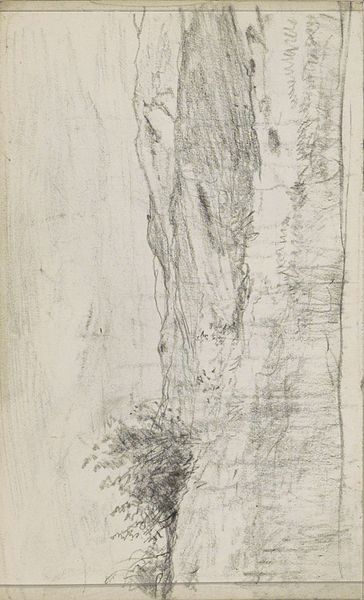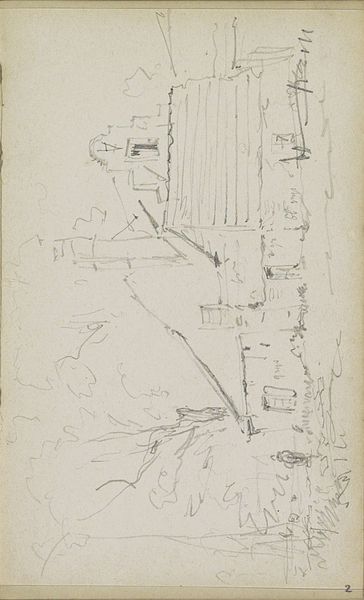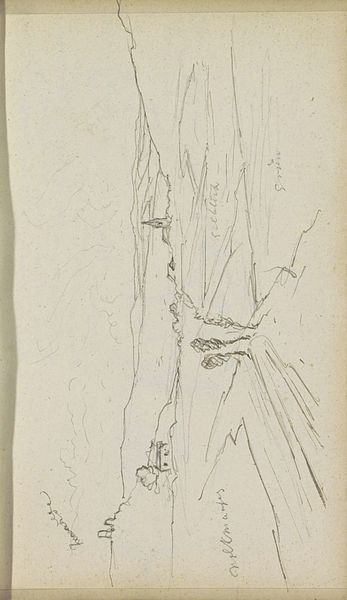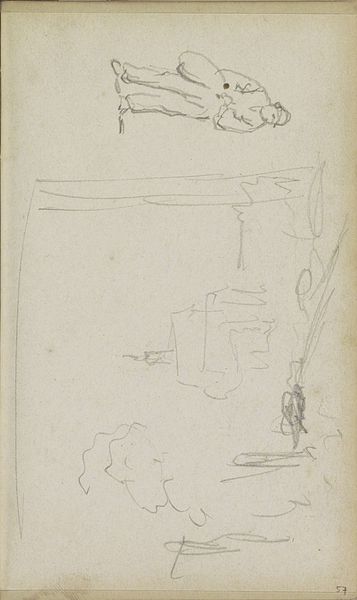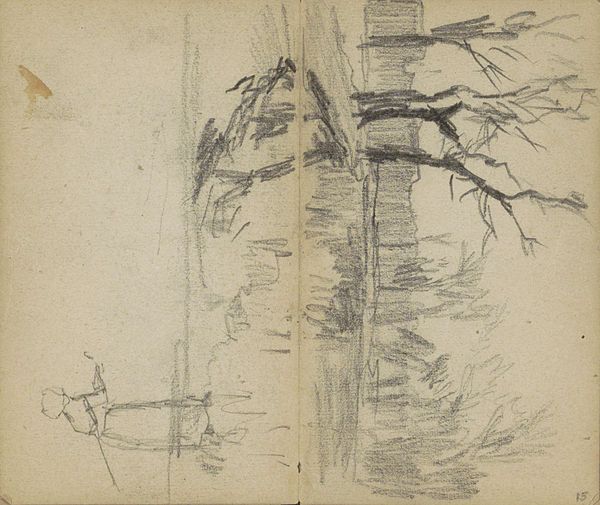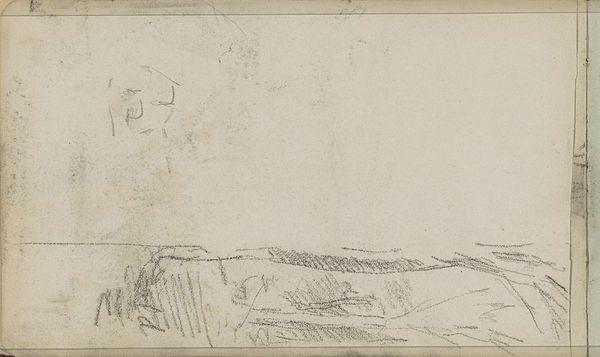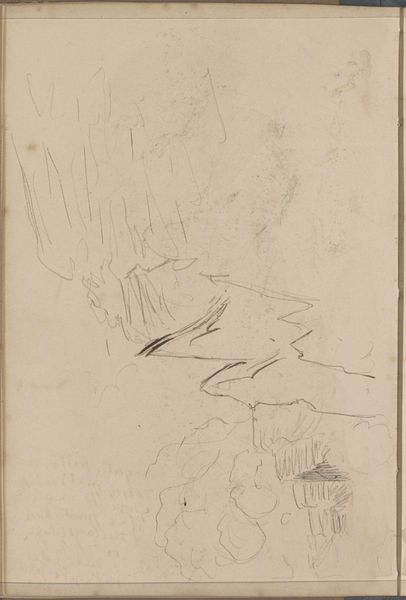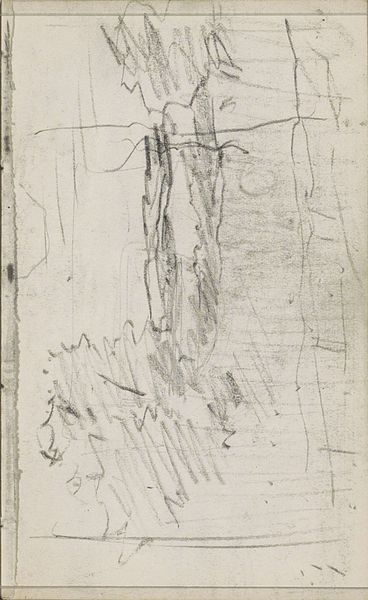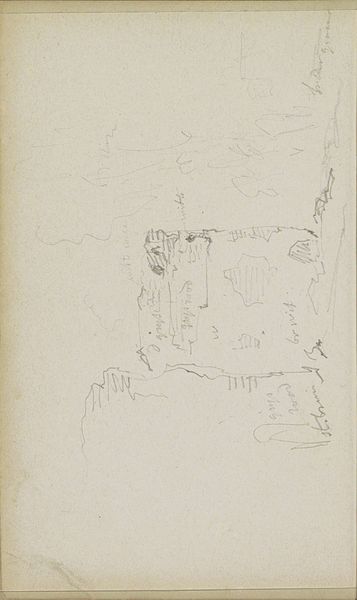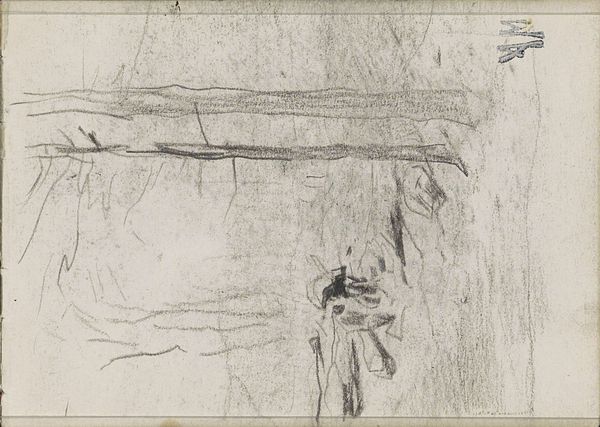
drawing, pencil
#
drawing
#
dutch-golden-age
#
impressionism
#
landscape
#
pencil
#
realism
Copyright: Rijks Museum: Open Domain
Anton Mauve made this drawing, Waterkant van een rivier, using graphite on paper. Graphite, derived from the Greek word "graphein" meaning "to write," is a crystalline form of carbon, its layered structure enabling it to leave marks on surfaces with minimal pressure. In this work, Mauve utilized the inherent qualities of graphite to capture a fleeting moment along a riverbank. The subtle variations in tone and texture, achieved through careful manipulation of the graphite pencil, imbue the scene with a sense of atmospheric depth and tranquility. The softness of the medium allows for the depiction of light reflecting off the water's surface, while the precision of line captures the delicate details of the surrounding foliage. Drawings like this one are often considered preliminary studies, laying the groundwork for paintings. We can appreciate the artist's intimate engagement with the landscape, and also understand the skilled traditions that elevate sketching from a mere preparatory task, to a work of art in its own right. Considering materials and making allows us to challenge any perceived distinction between fine art and craft.
Comments
No comments
Be the first to comment and join the conversation on the ultimate creative platform.
